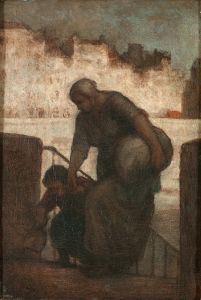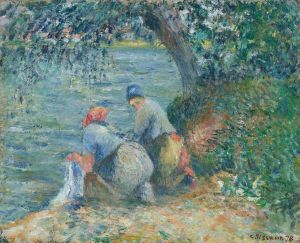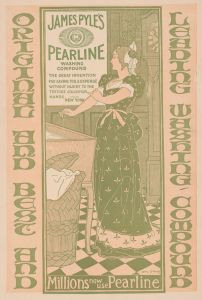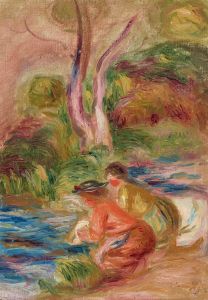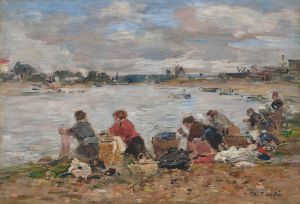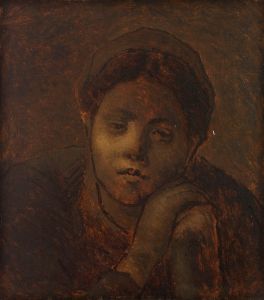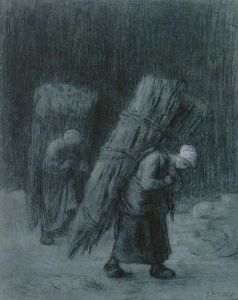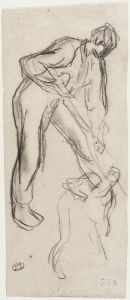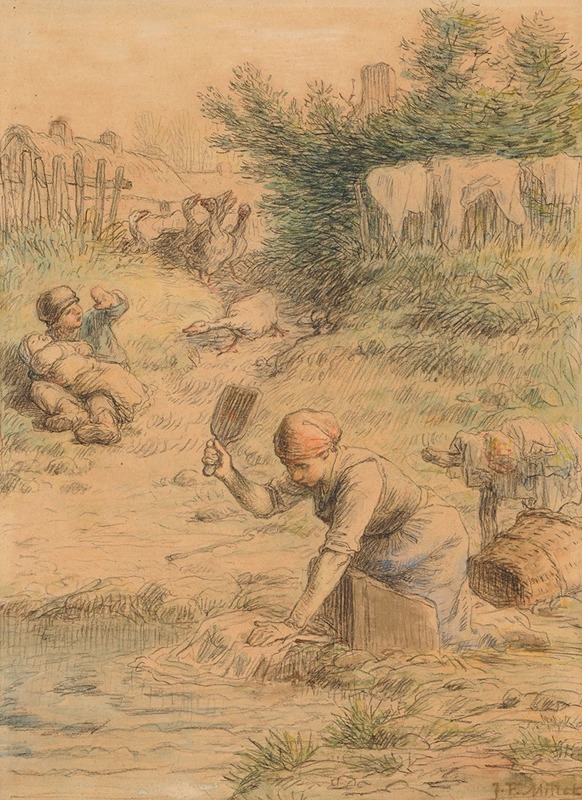
La Lavandière
A hand-painted replica of Jean-François Millet’s masterpiece La Lavandière, meticulously crafted by professional artists to capture the true essence of the original. Each piece is created with museum-quality canvas and rare mineral pigments, carefully painted by experienced artists with delicate brushstrokes and rich, layered colors to perfectly recreate the texture of the original artwork. Unlike machine-printed reproductions, this hand-painted version brings the painting to life, infused with the artist’s emotions and skill in every stroke. Whether for personal collection or home decoration, it instantly elevates the artistic atmosphere of any space.
Jean-François Millet, a prominent French painter and one of the founders of the Barbizon school, is renowned for his depictions of peasant life. Among his notable works is "La Lavandière," which translates to "The Washerwoman." This painting exemplifies Millet's focus on rural labor and his ability to capture the dignity and simplicity of everyday life.
"La Lavandière" portrays a woman engaged in the task of washing clothes, a common and labor-intensive chore in rural communities during the 19th century. Millet's choice to depict such a scene reflects his interest in the lives of ordinary people and his commitment to portraying them with respect and realism. The painting is characterized by its muted color palette and attention to detail, which are hallmarks of Millet's style.
Millet was born in 1814 in the village of Gruchy, in Normandy, France. His upbringing in a farming community deeply influenced his artistic vision. He moved to Paris in 1837 to study art, where he was exposed to the works of the Old Masters and contemporary artists. However, it was his return to rural themes that defined his career. In the 1840s, Millet settled in Barbizon, a village near the Forest of Fontainebleau, where he became a leading figure in the Barbizon school, a movement that emphasized naturalism and plein air painting.
The Barbizon school artists, including Millet, sought to break away from the formalism of academic art and instead focused on landscapes and scenes of rural life. Millet's work often highlighted the connection between humans and nature, and he was particularly interested in the cycles of rural labor. His paintings, including "La Lavandière," are noted for their empathy and the way they elevate the status of the peasant class.
"La Lavandière" is a testament to Millet's skill in capturing the essence of rural life. The composition of the painting is simple yet powerful, with the washerwoman depicted in a natural setting, surrounded by the tools of her trade. Millet's use of light and shadow adds depth to the scene, emphasizing the physicality of the woman's work and the serene environment in which she labors.
Millet's work was not always well-received during his lifetime. Critics often misunderstood his focus on peasant life, interpreting it as a political statement rather than an artistic choice. However, his reputation grew over time, and he is now celebrated for his contributions to the Realist movement and his influence on later artists, including Vincent van Gogh.
"La Lavandière," like many of Millet's works, serves as a historical document, offering insight into the daily lives of 19th-century rural communities. It reflects Millet's belief in the nobility of labor and his dedication to portraying the human condition with honesty and compassion. Today, Millet's paintings are held in high regard and can be found in major museums around the world, where they continue to inspire and resonate with audiences.






